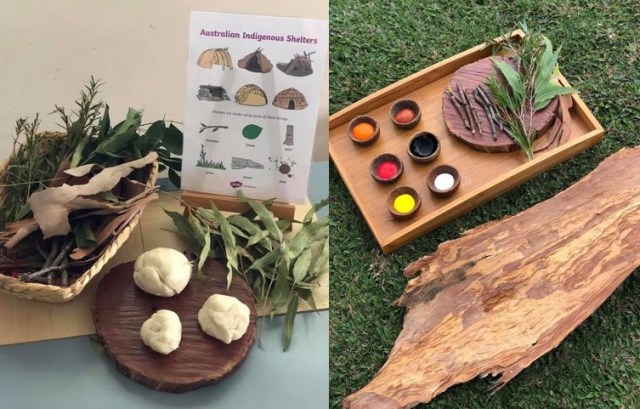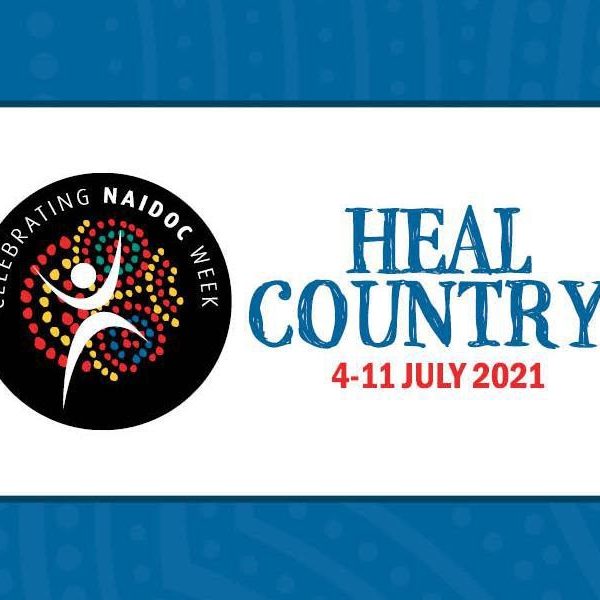NSW Department of Education gives guidance on embedding First Nations perspectives

The New South Wales Department of Education recently shared advice for early childhood education and care (ECEC) providers on embedding Aboriginal and Torres Strait Islander perspectives through their program and practice, as part of the ongoing Quality in Practice series, led by Jessica Staines, Director of the Koori Curriculum.
Ms Staines shared her thoughts on how educators can explore National Quality Standard 1.2 and embed Aboriginal and Torres Strait Islander perspectives, using her position as a Wiradjuri Woman, early childhood teacher and Director of the Koori Curriculum.
She has worked in early childhood for 15 years for a range of service providers in both urban and regional communities. Whilst working in early childhood, she “naturally found herself supporting educators to become more culturally aware and confident in embedding Aboriginal and Torres Strait Islander perspectives in their program,” something which has seen her transition into running the Koori Curriculum business.
The importance of intentional teaching
Ms Staines began her advice by urging educators, leaders and teams to be clear on their ‘why’.
“Why is it important to embed an Aboriginal and Torres Strait Islander perspective in your program? Is it just important when you have Aboriginal and Torres Strait Islander children attending the service or is it equally as important for non-Indigenous children as well?
“When teaching Aboriginal and Torres Strait Islander children, contextualising the curriculum through culture is essential if we want to see them thrive in school and early education settings,” she explained.
“Additionally, my ‘why’ is also linked to my understanding of how education is key in Closing the Gap between Aboriginal and Torres Strait Islander and non-Indigenous Australians. For Aboriginal and Torres Strait Islander children to receive quality early learning programs, educators need to understand the trauma experienced by Aboriginal and Torres Strait Islander people historically in mainstream institutions and the important steps they need to take to create culturally inclusive environments and build trust.”
As well as supporting First Nations children, Ms Staines said that embedding Aboriginal and Torres Strait Islander perspectives in ECEC is equally as important for the benefit of non-Indigenous children, regardless of whether there are any Aboriginal and Torres Strait Islander children attending the service.
“In this context, my ‘why’ is centred around creating an anti-bias, anti-racist and inclusive curriculum. Additionally, it’s about celebrating culture, education, historical acceptance, race relations and reconciliation,” she said.
Tips for embedding Aboriginal and Torres Strait Islander perspectives
For many educators embedding Aboriginal and Torres Strait Islander perspectives in their curriculum is a daunting process. This can even be the case for Aboriginal and Torres Strait Islander educators as knowing about their culture and knowing how to translate it into an early learning context can be two separate things, Ms Staines explained.
“Words like offensive, stereotypical and tokenistic when used in reference to Aboriginal and Torres Strait Islander programs can often have a debilitating effect. Educators are often so worried about doing the wrong thing that they tend to do nothing at all and suffer from a form of analysis paralysis.”
“Educators need to start where they feel comfortable and confident and often these experiences can be seen as a tourist approach; for example, listening to didgeridoo music, painting with red, black and yellow colours and cooking bush tucker, etc. Whilst these experiences may be touristy, everyone needs to begin somewhere. However, eventually we want educators to begin thinking more holistically and embed Aboriginal and Torres Strait Islander perspectives within the curriculum instead of having it tacked on and separate.”
To get to a place where Aboriginal and Torres Strait Islander perspectives are meaningfully included in early childhood curriculums a multifaceted approach that includes using Aboriginal and Torres Strait Islander pedagogies, using children’s interests as a vehicle for learning and creating culturally inclusive play spaces is needed, she explained.
The Koori Curriculum has general principles that are used when supporting educators to embed Aboriginal and Torres Strait Islander perspectives in their program, including:
- Including a balance of contemporary, traditional, urban, regional and local cultural perspectives.
- Holistically programming and planning to embed an Aboriginal and Torres Strait Islander perspective in context to children’s interests.
- Ensuring culture is play based and not themed based teaching – this means Aboriginal and Torres Strait Islander people are not the topic, theme or interest. Additionally, when Aboriginal and Torres Strait Islander resources, tools and artefacts are available at a service, ensure they are utilised in play and not used in cultural corners as a display.
- Sprinkling culture across multiple play spaces instead of creating ‘cultural corners’.
- Celebrating culture with all age groups and not only in the pre-school room.
- Including Aboriginal and Torres Strait Islander perspectives every day and not only on significant dates or during cultural celebration periods.
“These principles are general and overarching and educators should also seek local consultation to ensure they are aware of any additional protocols which they will also need to take into account when programming and planning,” Ms Staines said.
“Consultation is how educators can stand behind their curriculum decisions with integrity and respect.”
“Whilst the Koori Curriculum principles are useful as a guide, the obstacle that most educators face is developing their own cultural confidence and capacity. Many educators feel that Aboriginal and Torres Strait Islander culture and history was not taught well during their formal schooling and are now engaging in a process of unlearning and relearning.”
As a result of this deficit, Ms Staines recommends that the work of embedding Aboriginal and Torres Strait Islander perspectives in early childhood curriculums needs to begin with educators first developing their own capacity. Some ways in which educators could begin are:
- Joining supportive online learning communities such as the Koori Curriculum Educator Community on Facebook.
- Listening to Aboriginal and Torres Strait Islander Radio Stations and reading our National fortnightly newspaper called the Koori Mail.
- Tune into podcasts such as Educator Yarns.
- Attend local Aboriginal and Torres Strait Islander community events.
- Register for a Reconciliation Action Plan.
- Book in team professional development workshops.
Popular

Policy
Economics
Jobs News
Provider
Workforce
Children’s Services Award changes finalised to address gender-based undervaluation
2025-12-12 06:58:10
by Fiona Alston

Provider
Workforce
Quality
Fair Work Commission confirms forced resignation grounds in case involving early learning provider
2025-12-08 07:30:23
by Fiona Alston

Workforce
Quality
Practice
Provider
Research
How one teacher is using Little J & Big Cuz to build empathy, understanding and confidence in First Nations learning
2025-12-08 07:15:19
by Fiona Alston
















